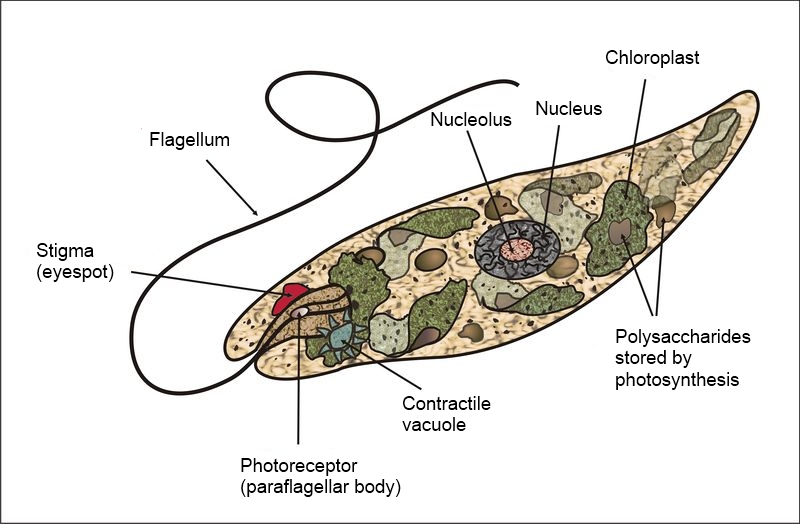MS-LS1 From Molecules to Organisms: Structures and Processes
This is Algae Research and Supply's Happy Place- aquatic science can be used in nearly every aspect of this NGSS topic area.
Jump to a section:
LS1.A: Structure and FunctionLS1.B: Growth and Development of Organisms
LS1.C: Organization for Matter and Energy Flow in Organisms
LS1.D: Information Processing
PS3.D: Energy in Chemical Processes and Everyday Life
LS1.A: Structure and Function
LS1.A: Structure and Function
----------
All living things are made up of cells, which is the smallest unit that can be said to be alive. An organism may consist of one single cell (unicellular) or many different numbers and types of cells (multicellular). (MS-LS1-1)
Activity: Viewing cells under a microscope. Algae cells come in many different shapes, sizes, and modes of locomotion.
KIT: This kit (ALGAE RESEARCH SUPPLY: ALGAE CULTURE FOR SIX ALGAE STRAINS FOR CLASSROOM INVESTIGATIONS) is great to see the diversity of single celled organisms. The spirulina cultures are 'colonies' of single celled organisms that are cyanobacteria. The goal of this kit is to put the different algae strains in front of the student so they can observe. If you are thinking about culturing these strains- go right ahead, these are ready to grow!
----------
Within cells, special structures are responsible for particular functions, and the cell membrane forms the boundary that controls what enters and leaves the cell. (MS-LS1-2)
Activity:
First, nothing beats the stomata of the back of the plant leaf. Go get one from outside, low-cost and high-reward.

Plant Stomata
Elodia leaf is also a great way to observe internal structures a plant cell. Use different intensities of light to get the cytoplasm of the cell to circulate in a process called 'cytoplasmis streaming'. Very cool for students to look at under a simple dissecting microscope.

Elodia leaf and cytoplasmic streaming
In algae often times structures are small, but you can make out many of them such as flagella, chloroplast, Euglina is a large cell that allows lots of things to be seen. Also Tetracelmis is another, slightly smaller in size, but more robust culture to keep in the classroom

Euglina

Tetracelmis
----------
In multicellular organisms, the body is a system of multiple interacting subsystems. These subsystems are groups of cells that work together to form tissues and organs that are specialized for particular body functions. (MS-LS1-3)
You will undoubtedly talk about human systems and plant systems, but you may not know that algae have complex systems too! The kelps (brown algae) such a Macrocystis and Nereocystis can move sugars (mannitol) from the blades (leaf like structures) to their hold-fast (root like structures) with a simple system that goes through their stipe (trunk like structure).


Nereocystis and general CX of brown algae stipe.
----------
----------
LS1.B: Growth and Development of Organisms
Plants reproduce in a variety of ways, sometimes depending on animal behavior and specialized features for reproduction. (MS-LS1-4)
As land animals, we humans need to know about birds and the bees as far as pollinators, but in the aquatic realm, interaction is a bit different. Under water there are many examples of plant-animal symbiotic relationships. An important one is that of coral:
Symbiotic relationship with algae and coral
----------
Genetic factors as well as local conditions affect the growth of the adult plant. (MS-LS1-5)
There are many factors that influence the growth rate of algae including:
These are all super simple to manipulate using algae.
KITS for growing algae to test local conditions:
- Nannochloropsis kit.
-
ALGAE RESEARCH SUPPLY: ALGAE RESEARCH KIT: CULTURE AND SUPPLIES FOR A SCIENCE PROJECT
- ALGAE RESEARCH SUPPLY: ALGAE CULTURING PROJECT KIT FOR 25 STUDENTS: 7-14 DAY PROJECT.
LS1.C: Organization for Matter and Energy Flow in Organisms
Plants, algae (including phytoplankton), and many microorganisms use the energy from light to make sugars (food) from carbon dioxide from the atmosphere and water through the process of photosynthesis, which also releases oxygen. These sugars can be used immediately or stored for growth or later use. (MS-LS1-6)
Within individual organisms, food moves through a series of chemical reactions in which it is broken down and rearranged to form new molecules, to support growth, or to release energy. (MS-LS1-7)
LS1.D: Information Processing
Each sense receptor responds to different inputs (electromagnetic, mechanical, chemical), transmitting them as signals that travel along nerve cells to the brain. The signals are then processed in the brain, resulting in immediate behaviors or memories. (MS-LS1-8)
PS3.D: Energy in Chemical Processes and Everyday Life
The chemical reaction by which plants produce complex food molecules (sugars) requires an energy input (i.e., from sunlight) to occur. In this reaction, carbon dioxide and water combine to form carbon-based organic molecules and release oxygen. (secondary to MS-LS1-6)
Cellular respiration in plants and animals involve chemical reactions with oxygen that release stored energy. In these processes, complex molecules containing carbon react with oxygen to produce carbon dioxide and other materials. (secondary to MS-LS1-7)

